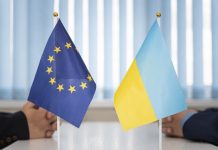
By Joseph Mazur
Withdrawal and isolation could avoid foreign affairs and wars, but the costs will be far higher in the long run.
Since the end of the Second World War, NATO has been a cornerstone of global security that few have questioned. Now, however, with a second term for the NATO-sceptic Donald Trump a real possibility, it is appropriate to consider what the consequences of a US withdrawal from the alliance could be.
Catastrophic if it happens. What if the U.S. were to pull out of the North Atlantic Treaty Organization (NATO), a threat declared on several occasions by a current contender in the running for President of the United States? As a columnist for this magazine, my contributions have almost always avoided direct political sentiments and commentaries involving candid opinions not supported by cited evidence. However, this possibility is too dangerous for me to continue to follow my self-imposed publication restrictions. So, I feel self-compelled to ask: Would NATO, which has kept Europe in relative peace for over 75 years, collapse without U.S. membership and support? It is one of those questions that has only frightening answers.
“No, I would not protect you. In fact, I would encourage them to do whatever the hell they want. You got to pay. You got to pay your bills.” – Former U.S. President, Donald Trump[1]
The epigraph comment above is a story recounted at one of Donald Trump’s political rallies. As usual for the former President, it is a jumbling, multi-gap account that boggles intelligence. He was allegedly referring to a talk he had with a leader of an unidentified NATO member who asked whether the U.S. would or would not defend members who fail to pay their share. “No,” he answered. “I would not protect you. In fact, I would encourage them [ostensibly Russia] to do whatever the hell they want. You gotta to pay. You gotta to pay your bills.” [2] My guess, knowing that Trump frequently makes things up, is that there was no such person, and the exchange never really happened, though, at his rallies, he likes to stir the senses of wondrous truth to confuse his listeners about what he stands for—nothing but himself. Anne Applebaum, staff writer for The Atlantic, asserts, “Almost every day he sounds more extreme, more unhinged, and more dangerous.” [3]
For Trump, every world-improving move is transactional. Tom Nichols, another Atlantic academic specialist on international affairs I trustingly follow, explains that, for him, “NATO is some sort of protection racket, in which our European allies come to Washington like quivering shopkeepers and make an offering to the local mob boss from their weekly receipts.” [4] Trump felt that each NATO member should be contributing a fair share at 2 percent of its GDP, which, under NATO’s guidelines, is suggested, not mandatory. Now, though, 23 members have hit that target, not because Trump has threatened to abandon the alliance but rather because of Vladimir Putin’s full-scale invasion of Ukraine.
Vladimir Putin’s dream
In the past 75 years, wars between European countries were few and short. Russia invaded Hungary in 1956 and Czechoslovakia in 1968. Turkey invaded Cyprus in 1974. And let’s not forget the Croatia and Slovenia breakaway from Yugoslavia in 1991. So, imagine a time when NATO dissolves. Before the signing of the NATO Alliance, Europe had hardly any years of peace. Hundreds of wars between neighbors happened for a millennium until the end of World War 2.
I don’t wish to alarm my readers; however, if Donald Trump wins a second term as President of the United States, and if the U.S. pulls out of the NATO Alliance as Trump would have it, Europe could become a strategic battleground that could encounter a Russian invasion with a few thousand advanced conventional weapons, with probably no need of nuclear ones. But with Russia’s force of over 5,000 strategic and tactical nuclear weapons, any battles will come with an overwhelming price of human suffering.
When I talk about this scenario with friends, and acquaintances that include foreign affairs specialists, I am bombarded with retorts, mostly in the form of laughter. However, those friends know too well that history often hits us in moments when catastrophic events are so unbelievable. The historian and former diplomat Michael Kimmage confirmed my view that Putin has a long-term plan that got unexpectedly entangled in a war with Ukraine. In January 2022, Kimmage said, “[NATO] is too large, too poorly defined, and too provocative for its own good.” Yet, in a recent Foreign Affairs essay with Liana Fix, a Fellow for Europe at the Council on Foreign Relations, Kimmage concluded, “It is no fantasy that, instead of perpetual peace—and instead, even of an iron curtain—chaos could again descend on a continent all too familiar with war.” [5] Those differing opinions leave us with strategic challenges. If we agree with Kimmage’s earlier opinion, the world may or may not end. If we agree with his concluding article, the world will be in a bad place, but not so severely bad as what could happen if Trump abandons NATO. Whatever view we go with, we must agree that if Trump is reelected, we must take his repeated threats of withdrawing the U.S. from the alliance seriously.
Let’s consider Trump’s warnings as a turbulent strategy, or what was once called the “Madman Theory.” As my journalist colleague Natasha Lindstaedt, professor in the Department of Government at the University of Essex, points out in her recent post for The World Financial Review, “Madman theory assumes that making seemingly unbelievable threats—such as embarking on nuclear war—are more credible if they are coming from someone unpredictable and possibly unstable.” [6] So perhaps Trump, as the late President Richard Nixon did in his term of office, is playing the game of Madman Theory. But Lindstaedt, an expert tin authoritarianism and author of Democratic Decay and Authoritarian Resurgence (Policy Press), points to studies of personalist dictators (all power in one person) who use warnings to show toughness to conceal poor military intelligence by touting risky bravado. In her astute essay, she tells us, “Madmen never prevail,” and Trump utilizes a theory that erodes his credibility and weakens foreign policy interests. “Madmen theory isn’t really strategic—it’s just idiotic.” [7]
In theory, Trump is not a madman; at least, we cannot say he is, without a face-to-face psychiatric evaluation of whether he is or is not. Declaring that he is would break the Goldwater Rule, an ethics annotation of the American Psychological Association (APA) declaration that “it is unethical for a psychiatrist to offer a professional opinion unless he or she has conducted an examination and has shown proper authorization for such a statement.” So, we cannot interpret or assess Trump’s mindset, even when he idiotically advises drinking bleach to “kill” SARS-CoV-2 viruses or when he comes up with crazy ideas such as “imposing an ‘all tariff policy’ that would ultimately enable him to get rid of the [U.S.] income tax.” Trump knows that none of those ideas could ever happen, but annulling NATO is feasible. A 1979 U.S. Supreme Court case (Goldwater v. Carter, 444 U.S. 996, 1003) permitted President Jimmy Carter to “unilaterally” nullify the Sino-American Mutual Defense Treaty. The U.S. Constitution says the Senate must participate in ratifying a treaty, but it is silent about annulling one. Madman or not, nullifying NATO would set the clock back to the first half of the twentieth century and have the world repeat our world wars. If we think Trump is all talk, let us remember that, as promised, he pulled out of the Iran nuclear deal notwithstanding Iranian acquiescence. Look at its nuclear program now. It is within weeks of being able to build a nuclear bomb.
As Tom Nichols, another Atlantic columnist I faithfully follow, tells us, “For too long, Trump has gotten away with pretending that his emotional issues are just part of some offbeat New York charm or an expression of his enthusiasm for public performance. But Trump is obviously unfit—and something is profoundly wrong with a political environment in which he can now say almost anything, no matter how weird and fallacious, and his comments will get a couple of days of coverage and then a shrug as if to say: Another day, another Trump rant about sharks.”[8]
A brief NATO history
“I cannot tell you exactly what the next crisis or the next conflict or the next war will be, but as long as we stand together, no one can threaten us. We are safe.” – NATO Secretary-General Jens Stoltenberg at a celebration of NATO’s 75th anniversary.
NATO was established in 1949 to stabilize Western Europe’s plans for an economically unified future and—more to the core of the historical truth—to check the potential of a Soviet Union expansion. There was no initial intent to invite others to the party after the treaty involved 12 countries—Belgium, Canada, Denmark, France, Iceland, Italy, Luxembourg, the Netherlands, Norway, Portugal, the United Kingdom, and the United States. [9] Today, 32 member countries are in the alliance.
Strange as that may be, after ratification by the parliaments of the original 12 member states, there is a certain flexibility of commitments with treaty obligations and choices for participation. Iceland, for instance, is a member having no armed force other than a coastguard and national police force. It does have an air defense system and a voluntary peacekeeping force.
And then there is France, which withdrew from the integrated military structure of NATO in 1966 when President Charles de Gaulle, asking for increased military independence, refused control over its armed forces and nuclear deterrents. However, ever since the fall of the Berlin Wall, France has been one of the largest funders and contributors of peacekeeping troops.
But what is NATO about, and why is its existence so important? Without NATO, there is so much evidence that Russia will invade as many as possible of the weaker European states that were once part of the Soviet Union. Putin is driving the bus to nowhere-land in hopes of not only thwarting NATO, an alliance that he feels threatened by, but also from his fantasy of reestablishing the time of the proclamation of Imperial Russia that, back in the early 18th century, had a glorious past under the Romanov dynasties and Peter the Great (1682–1725). [10]
But empires come and go in history. The Holy Roman, Qing, Byzantine, Ottoman, and Swedish Empires no longer exist, yet we don’t see Swedes invading Denmark or Ottomans retaking Central Asia. I had several American supporters of Russia’s invasion of Ukraine tell me that “Kyiv was once the capital of Russia.” It comes from the confusion of the word Rus’, or Russes, people who once were led by Oleg the Wise, a Viking prince whose full name was Oleg of Novgorod and who conquered Kyiv in the ninth century to make it the capital of the Rus’. But the word “Rus’” has little to do with the current Russia or its people. The Russes were Slavs but mostly indigenous to early medieval Eastern Europe and Western Asia. Kyiv had never been the capital of the country we now call the Russian Federation.
What did Putin not understand?
Putin has argued that when the Soviet Union broke up, the West had promised that there would be no expansion of NATO. Such a promise never happened. Before the invasion of Ukraine, Russia had a reasonable grievance. Putin asserted that, in 1990, during negotiations over the reunification of Germany, the West assured the Soviet Union that NATO would not expand eastward past the Cold War border. He used a “broken pact” argument to justify his aggressive actions in George and Ukraine. Here again, Putin misreads European history. He maintains that NATO is violating an agreement that it would not expand “one inch” eastward beyond reunified Germany.[11] He knows that truth can be ignored. It is just a Putinesque conventional disinformation story suggesting that NATO allies threaten Russia’s existence.
What had the West agreed to for NATO’s future? Did the U.S. promise the Soviet Union that NATO would not expand eastward? The question has no easy answer. Alexander Lukin, Vice President of the Diplomatic Academy of the Russian Ministry of Foreign Affairs, wrote in Foreign Affairs, “Forgetting the promises made by Western leaders to Mikhail Gorbachev after the unification of Germany—most notably that they would not expand NATO eastward—the United States and its allies set out to achieve what Soviet resistance had prevented during the Cold War.” But such a promise never happened. [12] Mark Kramer, director of the Cold War Studies Project at Harvard University Davis Center, claims the NATO halt eastward is a myth that has never died. He argued in the Washington Quarterly that “the issue never came up during the negotiations on German reunification.”[13] At the breakup of the Soviet Union, Mikhail Gorbachev, then President of the Soviet Union, was clearly in a fix, with his country’s budget deficit bloated by trade, unemployment, and lack of loan availability. [14] Gorbachev, leading a country that was on the brink of economic collapse, agreed to terms of Germany’s reunification at a so-called “Two Plus Four Conference” under the auspices of the U.S. Soviet Union, France, and Great Britain that ended with the Treaty on the Final Settlement on the reunification of Germany. Under that, the united Germany could join NATO. Gorbachev might not have been happy, but the treaty confirmed that NATO could, by the united Germany’s choice, extend to Germany’s eastern border without nuclear weapons.
In reunification negotiations with NATO countries, the Soviets never questioned NATO expansion beyond the former German Democratic Republic (GDR). Read NATO Secretary-General Manfred Wörner’s 1990 speech on the Atlantic Alliance and European Security; the only thing agreed was that there would be no NATO deployments of non-German NATO forces “beyond the territory of the Federal Republic.” [15] We take Mikhail Gorbachev’s words to be evidence. In a 2014 interview on TV-Novosti, a Russian state news agency, he said, “The topic of NATO expansion was not at all discussed and not brought up in those years. I say this with full responsibility. [16] Not a single Eastern European country raised the issue, not even after the Warsaw Pact ceased to exist in 1991. Western leaders didn’t bring it up, either.” [17], [18] That said, the U.S. did present an informal indication that NATO would not expand eastward of Germany if the Soviet Union consented to German reunification. [19]
So, it is not clear. There were no signed agreements relating to NATO expansion into the Eastern Bloc. When the Chancellor of West Germany, Helmut Kohl, visited Gorbachev in Moscow in 1990, he understood that expansion of NATO to a reunified Germany would be acceptable to the Soviets. Let’s remember that the Soviets were then experiencing a budget deficit with no available loan markets, including U.S. banks, to continue the country’s economy and that West Germany gave the USSR $60 billion to keep the country afloat.
Russia Beyond interview with Gorbachev (2014).
On the occasion of the 25th anniversary of the fall of the Berlin Wall, the magazine Russia Beyond, founded by the Russian state-owned domestic news agency RIA, interviewed Mikhail Gorbachev. [20] When Gorbachev was asked about the problem-solving capabilities of contemporary world leaders, he defined it as “a new way of thinking.”
“What is the new way of thinking? It is recognizing that there are global threats – and at the time, it was primarily the threat of a nuclear conflict, which can only be removed by joint efforts. That means we need to build relations anew, conduct dialogue, seek paths to terminating the arms race. It means recognizing the freedom of choice for all peoples, while at the same time taking each other’s interests into account, building cooperation, and establishing ties, to make conflict and war impossible in Europe.”[21]
That certainly is not Putin’s way of thinking. The West should have anticipated future East-West security disagreements at the Atlantic Alliance and European Security meetings. Diplomacy, at that stage, might have made the world safer; however, even at that time, diplomacy could have worked with a clear-minded political figure.
James Baker meets Mikhail Gorbachev at the Kremlin (1990)
The Russia Beyond interview with Gorbachev happened just a decade ago. So, I spent many hours and days searching for evidence of the Putin contention that there were promises of no eastward expansion of NATO before coming across a 1990 U.S. State Department unclassified, heavily redacted “Memorandum of Conversation” between then U.S. Secretary of State James Baker and Mikhail Gorbachev at the Kremlin before the reunification of Germany. Halfway through, Baker brought up that topic. [22]
Baker: Let’s assume for the moment that unification is going to take place. Assuming that, would you prefer a united Germany outside of NATO that is independent and has no U.S. forces or would you prefer a united Germany with ties to NATO and assurances that there would be no extension of NATO’s current jurisdiction eastward?
Gorbachev: Let me say that the approach you have outlined is a very possible one. We don’t really want to see a replay of Versailles, where the Germans were able to arm themselves.
The best way to constrain that process is to ensure that Germany is contained within European structures. What you have said to me about your approach and your preference is very realistic. So let’s think about that. But don’t ask me to give you a bottom line right now.

A history taken from interviews is rarely reliable, for it usually involves evident memories that fade to become subjective with time. The Russia Beyond interview and Baker’s meeting tell us something without full evidence of what truly happened in Bonn at the Treaty on the Final Settlement concerning the unification of Germany, signed in Moscow on September 12, 1990. Had the West expanded NATO by invitation to every state member of the UN, history might have tweaked toward a different course. If all member states, including enemies of the West, were to join the alliance and agree to the terms of Article 5 (an armed attack against one or more of them in Europe or North America shall be considered an attack against them all), there would be no wars! Every state member would be obliged to consider an armed attack against one to be an attack against all.
The title, NATO, suggests that member states must be reasonably close to the North Atlantic. One could argue, and many have, that though Russia has no land close to the North Atlantic, it connects with the Atlantic through the Baltic Sea, the Black Sea, and the Arctic Ocean, so membership could be stretched as it has been for so many other members. NATO would have ignored Russia’s distance from the North Atlantic region. George Robertson, former NATO Secretary General, recalls the following exchange he had with Putin at a time when Russia wanted to be part of that secure, stable prosperous West that Russia was not part of:[23]
- Putin: When are you going to invite us to join NATO?
- Robertson: Well, we don’t invite people to join NATO.
- Putin: Well, we’re not standing in line with a lot of countries that don’t matter.
Russia is at war with Ukraine. What is next? Estonia? Moldova? Why not Kazakhstan? Are we ready for that?
Putin believes the history he makes up. His illegal aggressions against Ukraine have ended peace in Europe. According to NATO, “Russia is the most significant and direct threat to Allies’ security, peace, and stability in the Euro-Atlantic area.” [24] The Kremlin had voiced its understanding that “all of Kazakhstan was leased to Russia in negotiations with the Atlantic Alliance, so with any success in the war with Ukraine, Russia has the right to reclaim that country with its first democratically voted President, a country turning from Russia to the West for preferred economic alliances. Losing its sphere of influence on those old Soviet satellite states sends Russia to a lonely place. [25] So, Putin will do what he always does: subvert the truth to annex more territory (as if Russia itself is not geographically big enough) to feed his lust for colonial aggression. Moldova will come after any successes in Ukraine, then Estonia, and then (knowing the difficulties involving Afghanistan) Kazakhstan, the largest landlocked country in the world, rich in oil and uranium, is surely penciled into his war plans.
I just returned from Kazakhstan, a former Soviet Union Republic with a population of nearly 20 million. After spending time there, I was surprised to feel a change in my worldview of Central Asia. The cities are modern, beautiful, and superbly functional. Almaty, a city that was once the capital, is, in my limited experience, an outstandingly handsome city with almost every street tree-lined along central walking paths, bike lanes, small sidewalk playgrounds, and exercise pods for adults.
I may be naïve in my belief that, in the past five years, Kazakhstan, a country with close economic and security ties with Russia, has become a country that claims to be imperfectly democratic, yet is hardly so. Two 2023 opinion polls conducted by MediaNet six months apart concluded that the number of Kazakhs who fear that Russia may invade had doubled because of news of the war in Ukraine. [26] Opinions on the war in Ukraine show that 12.8 percent support Russia and 21.1 percent support Ukraine. Almost 60 percent have no opinion, though I suspect the fear of unfree speech may cause that. Would Russia invade Kazakhstan? It could have used its usual excuse to invade in 2022 when there were massive protests, when 2,500 peacekeeping soldiers were brought in from Russia, Armenia, Belarus, Kyrgyzstan, and Tajikistan to keep the peace.
According to Bruce Pannier, a Central Asia Fellow at the Foreign Policy Research Institute, Russia has been monitoring Kazakhstan for over 30 years, witnessing its flirt with a geopolitical shift to the West. However, ever since the Russian invasion of Ukraine, Kazakhs have become apprehensive of Russian imperialist dreams of a takeover. It’s a fear that comes from Russian officials calling for threats and from Russia’s invasion of Ukraine under the excuse of protecting Russians in Crimea and the Donbas area. [27] It’s not unreasonable, since most ethnic Russian residents were in the North Kazakhstan Region along the 6,846-kilometre (4,254-mile) border with Russia, the second-largest in the world.
In 2020, a deputy in the Moscow City Duma (Council), Yevgeny Fedorov, announced that the Belavezha Accords (a declaration that the Union of Soviet Socialist Republics had ceased to exist) that dissolved the Soviet Union were illegal and that Kazakhstan was effectively “leasing” Russian land. [28] Russia does have an agreement with Kazakhstan to lease the town of Baikonur (a 22-square-mile area) for Russia’s space program. Then, in 2022, Sergei Savostyanov released a statement supporting Russia’s invasion of Ukraine “as necessary to ‘denazify’ and ‘demilitarize’ Ukraine.” Savostyanov said Russia should take similar measures in Poland, Moldova, and Kazakhstan. [29] Soon after, he posted a video showing a leader of the Communist Party of the Russian Federation advising Russia to protect the Russian-speaking inhabitants “and take control of Kazakhstan’s uranium production because it is now the world’s leading producer and exporter of uranium ore.” [30] According to the 2021 census, 16 million inhabitants (83.7 percent) speak Russian. Does the leader of the Communist Party mean Russian inhabitants or Russian-speaking ones, which brings—in the inhabitant case—the number down to just under 3 million (15.5 percent)?
It might mean trouble for Kazakhstan, because it is far from Europe and remote from any security worries of the West. Kazakhstan has a small military. Ukraine has 2.25 million conscripts to the 108,000 that Kazakhstan has; yet, with all the support from NATO members, Ukraine is struggling to keep alive in its defense against Russia, geographically the largest country in the world. Though Kazakhstan is a member of a different shielding alliance that should protect it from an invasion, a takeover would be easy pickings for Russia. Unlike Ukraine, which could move NATO eastward, Kazakhstan is not an alliance threat, so there would be no Russian excuse for an invasion of such a non-threatening country.
What are NATO’s interests?
NATO focuses on its united European partners with vigilance with regard to actions against potential members geographically within a broadened scope of surrounding geopolitical borders. Though the alliance is not interested in defending any independent territories in Central Asia, there is NATO’s Partnership for Peace (PfP), a program involving non-member countries (many in Asia) cooperating on security, global challenges, and climate change. [31] There are 18 partner countries, including Kazakhstan and Russia.
The East has its alliances. The Soviets had the Brezhnev Doctrine, with nine member countries, and the 16-member Warsaw Pact that disbanded in 1991. [32] The Brezhnev Doctrine was a treaty much like NATO. The doctrine proclaimed that if any member state is under attack, all other members of the bloc, including Russia, should be justifiably considered under attack. [33] And now there is the Collective Security Treaty Organization (CSTO), a treaty including Belarus, a country bordering Poland in possession of Russian nuclear weapons. CSTO is an international treaty with specific objectives of “strengthening peace, security and stability, collective protection of independence, and territorial sovereignty.” [34] It operates under principles of international law, being many things (including protections that could do good in the world), but foremost, it is a defense alliance, no more or less than NATO’s commitment to those same objectives. However, like Article 51 of the UN Charter, CSTO, in Article 3 of its charter, uses the term “aggression” as a ground for self-defense that permits Russia to invade and annex the Crimean Peninsula, which was then a part of Ukraine. Self-defense for pro-Russian Ukrainians living in eastern and southern Ukraine was the proclaimed basis of Putin’s invasion. [35],[36]
Figure 1: Eastern Bloc (by way of Central Europe) before the collapse of the Soviet Union in 1989
Now there is CSTO
NATO has indeed been moving eastward. With 32 members and expanding, it is considerably more powerful than the five collective members of CSTO, Belarus, Kazakhstan, Kyrgyzstan, Russia, and Tajikistan. So, Putin does have a point. Considering his argument, Russia does feel encircled and threatened. If we look at the map showing the boundaries of the Soviet Bloc before 1989 (figure 1), we see a field of states protecting the western border of Russia. NATO members expanding eastward must give Russians a chill, especially since the collective GDP of NATO’s membership states is close to $50 trillion, while the collective GDP of CSTO is just under $5 trillion, a massive difference. However, Putin has a more covert reason for anger. For him, plans of empire rejuvenation are constrained by NATO’s overwhelming conventional weapons superiority, not to mention its nuclear arsenal. Russia’s aggressive actions in Georgia, Chechnya, Dagestan, Tajikistan, Abkhazia, Transnistria, Ossetia, Syria, and now Ukraine show that it means to take on as much territory as it can to build back the borders of the Soviet Union.

Now there is a new defense pact.
In Pyongyang on June 19, 2024, Putin and the North Korean Supreme Leader, Kim Jong Un, upgraded their ties to a “strategic partnership,” pledging to help each other if attacked. That small but consequential alliance, which hardly competes with NATO, is mostly a poster setup for public opinion issues of security. It requires either country to assist the other if attacked. As Putin put it just after signing the agreement, “The comprehensive partnership agreement signed today includes, among other things, the provision of mutual assistance in the event of aggression against one of the parties to this agreement.” [39] Putin’s decision to strengthen friendly ties with Kim shows how worried he is about the strength of NATO.
China is a potential member of the new pact, but President Xi never recognized Crimea as a part of Russia. If China decides to join the pact sometime in the future, it will have an overwhelming nuclear advantage. Not that that should matter when nuclear numbers are in the thousands, and just 10 of those insane weapons could wipe out Warsaw, Paris, London, Moscow, and New York. But the insanity of those numbers gives the West a chill by Putin’s threats to use tactical nuclear weapons in its war with Ukraine. But China, too, is worried. Besides tilting the balance of power and destabilizing the nuclear powers in East Asia, the Putin-Kim pact spells trouble for peace in the Koreas.
Do we understand why the U.S. and the Russian Federation are enemies? Does anyone?
Americans think of Russia as a tyrannically evil country that might someday take over the U.S. by creating enough disinformation to zombify us into believing that we are not who we are inwardly. Throughout my adult life, living in the U.S., I saw Canada as an ally and Russia as an enemy. Now, with age, I wonder why. Why do I and my U.S. State Department consider Russia a foe? Conversely, do Russians feel the same way about the U.S.? Why are we their enemies? It is not about the communist past. Though we were strange allied partners in both world wars, the tension goes back to the times of tsarist Russia. Something in that past created an inescapably deep belligerence that is neither understood nor breakable.
Since its independence in 1776, the U.S. has had just 17 years of peace. In that same period, Russia, ignoring princely feuds, peasant uprisings, and revolutions, has been at peace for 27 years but has invaded independent countries eight times to show military cultural differences between countries. The wonder is this: Why does Russia fear NATO when it already has CSTO and the world’s largest stockpile of nuclear weapons? Does it truly feel vulnerable to invasion? Surely not. It does, however, implant worry about its economic stability as an adversary of the West and an old foe of democratic countries. Why, I ask, must two of the four geographically largest countries have to be adversaries? Is it size, way of life, suspicion of the other, a Cold War reminiscence, or the power of one or more government officials? It cannot simply be size. Canada is larger than the U.S. by 58 million square miles. Those two countries have been comfortable border partners for over 200 years. Way of life, suspicion, Cold War reminiscence? Maybe. That leaves a definite yes to the “power” explanation.
And why does the U.S. fear the Russian Federation when it has NATO and almost as many nuclear weapons on its side in addition to an overwhelming number of the most sophisticated conventional weapons ever demonstrated? We can play the “what if” game of imagining—not a truce of a post-Cold War—but rather a respect for each other’s political designs, from autocratic to liberal democracies. Perhaps the problem is simply a question of leadership. It is difficult to understand why the U.S. and Russia continue with crumbling trust when reasonable cooperation could enhance economic support, emerging problems, and scientific partnerships (such as the continuing space science at the International Space Station). Imagine what could happen with flourishing trade, tourism, and diplomatic cooperation (all of which occur in a compromising limited exchange) if the two sides could overcome their ideological differences to keep the world from imploding on itself, such as restoring global economic stability, responding to climate change, tackling the most demanding international challenges of providing food, water, and healthcare to diminish human suffering, and other mutually benefiting interests. Or, as Eisenhower put it in a draft of his speech to the General Assembly of the United Nations on November 23, 1953, “Thus, the United States, Great Britain, and the Soviet Union jointly would be dedicating some of their strength to serve the needs rather than the fears of the world – to make the deserts flourish, to warm the cold, to feed the hungry, to alleviate the miseries of the world.”[40]

That goes for North and South Korea, Russia and Ukraine, China and Taiwan, Israel, and the Palestinian territories, and so many other pairs of hostile lands. The world seems to create alliances just like children choose friends. Why can’t we all get along? There was a time when states had to fend for resources or limit border intrusions. Now, though, the world relies on global connections that need relationships to survive, not only for tackling the problems of climate change, future pandemics, and immigration but also for so many situations that rip us apart. We teach our children to behave and to respect others, so why can’t we teach governments to be model caretakers of the planet? Of course, there is always the natural human challenge of untethered leaders who believe their citizens must always have an enemy. They contrive specters out of either territorial discords or conflicting governmental systems.
I have not heard any reasonable account, other than opposing beliefs in governmental systems, as reasons for belligerences between states. Some influential people would say that authoritarians force their way of governance on the people who have no say. I counter-argue that the people always have an option and the choice of revolution. Even Russia has had its share of them, though its people, like many in other parts of the world, find it hard, sometimes dangerous, to speak in public.
Jake Sullivan, the current U.S. President’s national security advisor, showed his reason for the “enemy” status the U.S. has for Russia. He said, “I do think we are dealing with the gathering and march of autocratic forces in ways that are not in the United States’ national interest, and that we do need to rally the values, norms, and forces of democracy to push back against that.” [42] So, it is authoritarianism that is not in the U.S.’s interest.
We are told by Michael Kimmage and Jeremy Shapiro, a Research Director at the European Council on Foreign Relations, that, after World War 2, the U.S. forced Germany and Japan into alliances providing a wide range of U.S. military bases, which Russia considered above and beyond the acceptable prize of cooperation in winning the war. [43] In turn, the Soviet Union subjected 15 countries to become satellite states, establishing a global trajectory surrounding its eastern and southern borders. But those spats are over. The Russian Federation is not the Soviet Union. What remains in dispute is its style of government, human rights abuses, cyberwarfare belligerence, and Putin’s ambition to bring back a sense of the empire’s past greatness. With those opposing views, I understand why the U.S. State Department continues to consider Russia a foe.
What could be the most significant consequence of a U.S. abandonment of NATO?
Is there anything else that NATO has to offer the U.S., a country bordered by two massive oceans and two stable democracies? Aside from 9/11, most Americans never had to be concerned about security and protection. They do not have a sense nor a memory of security vulnerability. They focus on domestic issues, like the cost of goods and services and healthcare, not fully on the benefit of trade agreements with a stable, thriving continent that could benefit them economically. NATO is far from their thoughts and concerns. Its existence is a hard grasp for them and an existential necessity for Eastern Europeans.
McKay Coppins, a staff writer for the Atlantic, fittingly tells us, “The alliance between Europe and America is supposed to be rooted in something more idealistic and meaningful than economic interests.” He visited Narva, a small city bordering on a narrow river that freezes over in winter and separates Estonia from Russia. He talks about meeting someone in Narva who tells him “his day-to-day life is shaped by the reality that a belligerent nuclear power exists right on the other side of this river. And if not for NATO, if not for America’s commitment to its European allies, Russia could roll a tank across that border and start to conquer Estonia.” [44] Estonians are concerned in ways Americans, with their innate security comforts, cannot understand. They should understand the consequences before voting for a president who says he will abandon NATO.
What will happen to NATO if Trump wins the 2024 presidential election? I can tell you. In the U.S., Project 2025, a 922-page “Conservative Promise,” is allegedly getting more widespread attention than Taylor Swift, though it has been years in the making. Read a few pages. It is terrifying. [45] Not only is it a plot to transform the U.S. liberal democracy into an autocratic one by reshaping the U.S. government to favor far-right policies, but it is also a plan to establish a new Cold War under the toughness of advancing nuclear weapons and annihilating arms control treaties. Trump, of course, said on Truth Social, “I know nothing about Project 2025.” Sure, he denies knowing, as he rejected the legitimacy of his loss in the last election. How could a Republican presidential candidate not be aware of Project 2025 when it is called the Presidential Transition Project, a blueprint for reshaping the U.S. federal government and consolidating executive power? Read Section 4, “Department of Defense,” by Christopher Miller, an acting U.S. Secretary of Defense for 54 days in the Trump Administration, just one small piece of that promise of an existential change in nuclear strategy, to learn about plans for a frightening significant increase in the deployment of nuclear weapons and destroying all arms control agreements. Voters in the U.S., as in most free countries, have a choice. Let’s be careful about what we wish for.
About the Author

Joseph Mazur is an Emeritus Professor of Mathematics at Emerson College’s Marlboro Institute for Liberal Arts & Interdisciplinary Studies. He is a recipient of fellowships from the Guggenheim, Bogliasco, and Rockefeller Foundations, and the author of eight acclaimed popular nonfiction books. His latest book is The Clock Mirage: Our Myth of Measured Time (Yale).
References
Follow his World Financial Review column at https://worldfinancialreview.com/category/columns/joseph-mazur/. More information about him is at http://www.josephmazur.com/.
- [1] https://apnews.com/article/trump-nato-foreign-aid-russia-2b8054a9fe185eec34c2c541cece655d
- [2] https://www.cnn.com/2024/02/10/politics/trump-russia-nato/index.html
- [3] https://www.theatlantic.com/international/archive/2024/06/european-union-2024-parliamentary-election/678654/?utm_source=newsletter&utm_medium=email&utm_campaign=author-anne-applebaum&utm_term=Author+Following+-+Anne+Applebaum
- [4] https://www.theatlantic.com/ideas/archive/2024/02/trump-rally-nato/677426/
- [5] https://www.foreignaffairs.com/united-states/trumps-threat-europe
- [6] https://worldfinancialreview.com/donald-trump-and-the-madman-theory-of-foreign-policy/
- [7] Ibid. World Financial Review.
- [8] https://www.theatlantic.com/politics/archive/2024/06/trump-sharks-las-vegas-rally-speech/678667/?utm_campaign=atlantic-daily-newsletter&utm_content=20240627&utm_source=newsletter&utm_medium=email&utm_term=The+Atlantic+Daily
- [9] https://www.nato.int/cps/en/natohq/topics_52044.htm#founding
- [10] https://reviews.history.ac.uk/review/1611
- [11] https://www.politifact.com/factchecks/2022/feb/28/candace-owens/fact-checking-claims-nato-us-broke-agreement-again/
- [12] https://www.foreignaffairs.com/articles/russia-fsu/2014-06-16/what-kremlin-thinking
- [13] https://ciaotest.cc.columbia.edu/journals/twq/v32i2/f_0016179_13953.pdf
- [14] https://nsarchive.gwu.edu/sites/default/files/documents/4325679/Document-05-Memorandum-of-conversation-between.pdf
- [15] https://www.nato.int/docu/speech/1990/s900517a_e.htm
- [16] https://www.brookings.edu/blog/up-front/2014/11/06/did-nato-promise-not-to-enlarge-gorbachev-says-no/
- [17]https://www.rbth.com/international/2014/10/16/mikhail_gorbachev_i_am_against_all_walls_40673.html
- [18] https://www.foreignaffairs.com/articles/russia-fsu/2014-08-11/broken-promise
- [19] Shifrinson, Joshua R. Itzkowitz. “Deal or No Deal? The End of the Cold War and the U.S. Offer to Limit NATO Expansion.” International Security, vol. 40, no. 4, 2016, pp. 7–44. JSTOR See: https://www.jstor.org/stable/43828313
- [20] https://www.telegraph.co.uk/sponsored/rbth/politics/11197743/gorbachev-fall-berlin-wall.html
- [21] ibid, rbth.com
- [22] https://nsarchive.gwu.edu/sites/default/files/documents/4325680/Document-06-Record-of-conversation-between.pdf
- [23] https://foreignpolicy.com/2022/01/19/putin-russia-ukraine-nato-george-robertson/
- [24] https://www.nato.int/cps/en/natohq/115204.htm
- [25] https://www.venice.coe.int/webforms/documents/?pdf=CDL(1994)054-e
- [26] https://www.reuters.com/world/kazakhs-increasingly-wary-russias-belligerence-poll-2023-05-17/
- [27] https://www.fpri.org/contributor/bruce-pannier/
- [28] Aleksandrov, Mikhail, Uneasy Alliance: Relations Between Kazakhstan and Russia in the Post-Soviet Era, 1992-1997 (Westport, Connecticut, Greenwood Press, 1999), p. 120.
- [29] https://www.fpri.org/article/2022/04/ukraine-war-sparks-suspicion-over-russias-designs-on-kazakhstan/
- [30]https://stat.gov.kz/upload/medialibrary/cee/3rsfg8ps3xo19orb284esg4rx27ihqf7/%D0%9D%D0%B0%D1%86%D0%B8%D0%BE%D0%BD%D0%B0%D0%BB%D1%8C%D0%BD%D1%8B%D0%B9%20%D1%81%D0%BE%D1%81%D1%82%D0%B0%D0%B2.pdf
- [31] https://www.nato.int/cps/en/natohq/topics_84336.htm#pfp
- [32] The Warsaw Pact included: Albania, Bulgaria, Czechoslovakia, East Germany, Hungry, Poland, Romania, and The Soviet Union.
- [33] https://scholar.smu.edu/cgi/viewcontent.cgi?article=4221&context=til
- [34] https://www.files.ethz.ch/isn/176487/RPS_18_CSTO_2002-2012.pdf
- [35] https://worldfinancialreview.com/why-are-wars-legal-by-international-law-waging-war-itself-is-a-war-crime-why-do-we-think-it-is-not/
- [36] Yoram Dinstein, War, Aggression and Self-Defence 6th edition (Cambridge: Cambridge University Press, 2017), p. 22.
- [37] https://www.nordregio.org
- [38] https://www.theatlantic.com/magazine/archive/2024/01/trump-2024-reelection-pull-out-of-nato-membership/676120/?utm_campaign=atlantic-daily-newsletter&utm_content=20240604&utm_source=newsletter&utm_medium=email&utm_term=The+Atlantic+Daily
- [39] https://tass.com/politics/1805383
- [40] https://www.eisenhowerlibrary.gov/sites/default/files/research/online-documents/atoms-for-peace/atoms-for-peace-draft.pdf
- [41] https://www.eisenhowerlibrary.gov/sites/default/files/research/online-documents/atoms-for-peace/atoms-for-peace-draft.pdf
- [42] https://www.washingtonpost.com/politics/2023/06/21/biden-modi-india-democracy-autocracy/
- [43] https://www.foreignaffairs.com/united-states/myths-warp-how-america-sees-russia-and-vice-versa
- [44] https://www.theatlantic.com/newsletters/archive/2024/06/europe-braces-for-trumps-return/678596/
- [45] https://static.project2025.org/2025_MandateForLeadership_FULL.pdf



